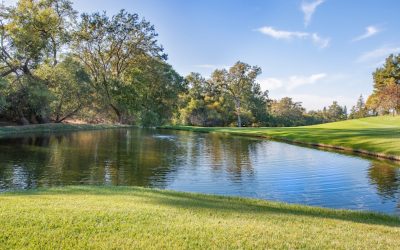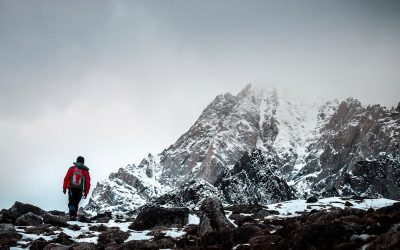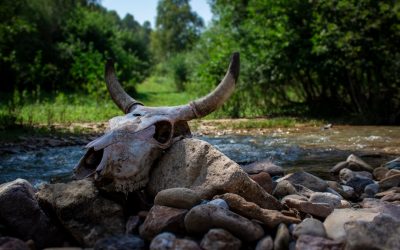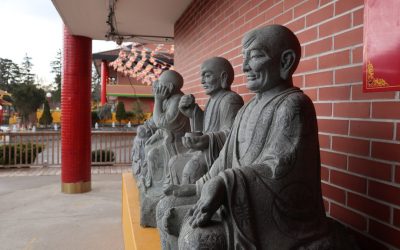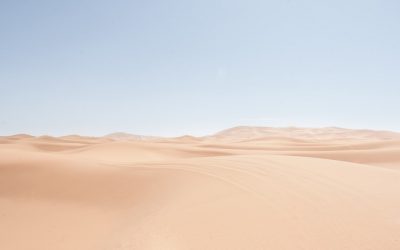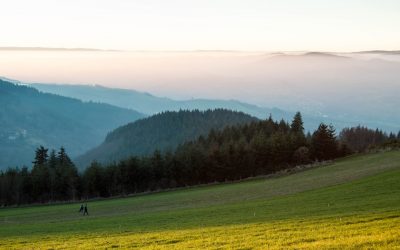Explore the World Through Geography, Natural Resources & Daily History
Clear, reliable and engaging guides that help you understand our planet — from UK geography education to global natural resources and On This Day history events.
Explore, discover, and learn about the wonders of our world! At Earth Site, we’re passionate about bringing geography, history, and science to life for curious minds of all ages. Whether you’re delving into historical events, uncovering the mysteries of the natural world, or seeking interactive resources, you’re in the right place.
Here, you can uncover the stories behind historical events, explore the natural wonders of our planet, and gain valuable insights into how the Earth’s systems shape our daily lives. From the towering peaks of mountain ranges to the far-reaching impacts of human innovation, we aim to make every topic both engaging and informative.
Start your journey of discovery with us today, and let’s make learning an adventure!
What We Cover
Earth Site brings together engaging and accessible educational content designed to help you understand the world, its history, and its natural systems.
🌍 Geography Education (UK & Worldwide)
We publish clear, easy-to-understand geography resources for students, teachers and curious learners. Our guides support geography education in the UK and cover physical geography, climate, ecosystems, population, and global development.
⛏️ Natural Resources & Environmental Geography
Explore detailed country profiles covering natural resources, mining, energy, geology and global environmental challenges. We show how nations manage minerals, water, land and ecosystems, and why these resources matter.
📅 On This Day in History
Every day has a story. Our On This Day history series features major events, anniversaries, traditions, and cultural milestones from around the world — with timelines, context, and fun facts.
TIMELINE
Exploring Albania’s Political Boundaries: Provinces, Districts, or History?
Albania, located in Southeastern Europe, is a country with a rich history and diverse cultural heritage. Understanding the political boundaries of Albania is crucial for comprehending its political, social, and economic dynamics. This article aims to provide a comprehensive overview of Albania’s political divisions, exploring their historical evolution, the impact of Ottoman rule, the current provinces and districts, the role of politics in shaping these divisions, the cultural significance of regional identities, the challenges of governance, the economic landscape, and the future prospects for Albania’s political boundaries. Summary Albania’s political boundaries have evolved over time, with provinces and districts playing a significant role in shaping the country’s governance structure. Ottoman rule had a profound impact on Albania’s political boundaries, leading to the creation of new administrative units and the consolidation of power in the hands of local elites. Today, Albania is divided into 12 counties and 61 municipalities, each with its own unique political and cultural identity. Politics plays a crucial role in shaping Albania’s provincial and district divisions, with local and national interests often competing for influence and power. Albania’s regional identities are an important part of the country’s cultural heritage, with each province boasting its own distinct traditions, customs, and dialects. The Historical Evolution of Albania’s Provinces and Districts Albania’s historical provinces and districts have undergone significant changes over time. In ancient times, the region was divided into several tribes and city-states. During the medieval period, various kingdoms and principalities emerged, including the Kingdom of Illyria and the Principality of Arbanon. However, with the arrival of foreign powers such as the Byzantines, Venetians, and Ottomans, Albania’s political...
Albania: Economy & Natural Resources Discovering Natural Resources of Albania
Albania: Economy & Natural Resources Discovering Natural Resources of Albania Albania, located in Southeastern Europe, is a country known for its stunning natural beauty and rich biodiversity. With a diverse geography that includes mountains, coastline, lakes, and rivers, Albania is home to a wide range of natural resources. These resources play a crucial role in the country’s economy and provide numerous benefits to both the environment and its people. Preserving and utilizing these resources sustainably is of utmost importance to ensure their long-term viability. By doing so, Albania can continue to benefit from its natural wealth while also protecting the environment for future generations. Albania, a gem tucked away in the Balkans, is more than just beautiful coastlines and ancient ruins. It is a country endowed with natural resources that could transform the economy of Albania. From vast oil and gas deposits to fertile farmland and hydropower capacity, Albania holds the keys to a more prosperous future. In this article, we’ll explore the natural resources of Albania, how they are utilized, and what challenges and opportunities lie ahead. Outline What Are the Key Natural Resources of Albania? How Important Is the Petroleum Sector to Albania? What Role Does Hydropower Play in the Albanian Economy? What Minerals and Ores Are Found in Albania? How Significant Is the Agricultural Sector in Albania? Can Albania’s Natural Gas Reserves Boost Its Energy Security? What Is the Role of Exports in Albania’s Resource Economy? How Has the Albanian Government Managed Its Resource Sector? What Challenges Hamper Albania’s Resource Utilization? What Does the Future Hold for Natural Resources in Albania? What Are the Key...
Exploring Albania’s Varied Terrain: Mountains, Valleys, and Plains
Albania, a small country located in the Balkan Peninsula, is known for its stunning and varied terrain. From majestic mountains to enchanting valleys and lush plains, Albania offers a diverse landscape that is waiting to be explored. This article will provide an in-depth look at Albania’s terrain and the importance of exploring its natural beauty. Summary Albania’s terrain is diverse and varied, with mountains, valleys, and plains. The mountains of Albania are majestic and offer great opportunities for hiking and trekking. The valleys of Albania are enchanting and perfect for exploring on foot. The plains of Albania are lush and ideal for cycling. Albania’s varied terrain also offers opportunities for skiing, snowboarding, rafting, kayaking, and wildlife watching. The Majestic Mountains of Albania Albania is home to several mountain ranges, including the Albanian Alps, the Korab Mountains, and the Ceraunian Mountains. These mountains offer breathtaking views and are popular destinations for hiking and skiing. The Albanian Alps, also known as the Accursed Mountains, are particularly famous for their rugged beauty and challenging hiking trails. With peaks reaching over 2,500 meters, these mountains provide a thrilling adventure for outdoor enthusiasts. For those who prefer winter sports, the Korab Mountains and the Ceraunian Mountains offer excellent skiing opportunities. The Korab Mountains, located on the border between Albania and North Macedonia, are home to Mount Korab, the highest peak in both countries. The Ceraunian Mountains, on the other hand, stretch along the Albanian Riviera and provide stunning views of the Adriatic Sea. The Enchanting Valleys of Albania Albania’s valleys are equally enchanting and offer a unique experience for hikers and explorers. The Valbona...
Discover Albania’s Rich Cultural and Historical Sites
Albania, a small country located in the Balkans, is a hidden gem when it comes to history and culture. With a rich and diverse past, Albania offers a fascinating journey through time, from ancient ruins to Ottoman architecture, from religious diversity to coastal fortresses. This article will take you on a virtual tour of Albania’s cultural treasures, exploring its history, archaeological sites, UNESCO World Heritage Sites, religious sites, coastal fortresses, national museums, traditional crafts, literary legacy, and cultural festivals. Get ready to be amazed by the wonders of Albania! Summary Albania has a rich and fascinating history that spans thousands of years. The country is home to many ancient wonders, including impressive ruins that offer a glimpse into the past. Albania’s Ottoman legacy is still visible today, with many buildings and cultural traditions influenced by the empire. The country boasts several UNESCO World Heritage Sites, which are a testament to its cultural significance. Albania’s religious diversity is reflected in its many sacred sites, which offer a unique insight into the country’s spiritual traditions. Albania’s Fascinating History: A Journey Through Time Albania’s history dates back thousands of years, with evidence of human habitation in the region as early as the Paleolithic era. Throughout its history, Albania has been influenced by various civilizations and empires, including the Illyrians, Romans, Byzantines, Ottomans, and Communists. Each era has left its mark on the country’s culture and heritage. One of the key events in Albania’s history is the Illyrian Kingdom, which existed from the 3rd century BC to the 2nd century AD. The Illyrians were known for their advanced civilization and skilled craftsmanship. The...
Albania’s Population Density: A Closer Look
Population density refers to the number of people living in a specific area, usually measured per square kilometer. It is an important metric that helps us understand how crowded or sparsely populated a region is. In the case of Albania, understanding its population density is crucial for various reasons. It provides insights into the country’s social and economic dynamics, helps in urban planning and resource allocation, and informs policy decisions related to infrastructure development and sustainable growth. Summary Albania has a population density of 105 people per square kilometer. The country’s landscape is characterized by mountains, hills, and coastal plains. Albania’s population density has fluctuated throughout history due to factors such as migration and political changes. Contributing factors to Albania’s population density include urbanization, economic opportunities, and cultural traditions. Albania’s population is predominantly Albanian, with a median age of 32 and a slightly higher percentage of females than males. Understanding the Geographical Landscape of Albania Albania is a small country located in Southeastern Europe, bordered by Montenegro to the northwest, Kosovo to the northeast, North Macedonia to the east, Greece to the south, and the Adriatic and Ionian Seas to the west. It covers an area of approximately 28,748 square kilometers, making it one of the smallest countries in Europe. Albania’s topography is characterized by a diverse landscape that includes mountains, hills, valleys, and coastal plains. The country is home to the Albanian Alps in the north, which are part of the Dinaric Alps range, as well as several other mountain ranges such as the Korab Mountains and the Ceraunian Mountains. The climate in Albania varies from Mediterranean along...
Albania’s Population Density: A Closer Look
Albania, a small country located in Southeastern Europe, has a population density of approximately 105 people per square kilometer. This makes it one of the most densely populated countries in Europe. Understanding population density is crucial for policymakers and planners as it helps them make informed decisions regarding resource allocation, infrastructure development, and urban planning. Population density refers to the number of people living in a specific area, usually measured in terms of persons per square kilometer. It provides insights into the distribution of the population across a country or region. In the case of Albania, its high population density is a result of various factors such as historical trends, migration patterns, regional variations, and urbanization. Summary Albania has a population density of 105 people per square kilometer. Albania’s population growth has fluctuated over the years, with a peak in the 1980s and a decline in recent years. Migration has had a significant impact on Albania’s population density, with many people leaving the country for better economic opportunities. There are significant regional variations in Albania’s population density, with the north being more densely populated than the south. Urbanization has led to an increase in Albania’s population density, with more people moving to cities in search of work and better living conditions. Historical trends in Albania’s population growth Albania has experienced significant population growth over the years. In the early 20th century, the country had a relatively small population of around 800,000 people. However, by the end of the century, the population had more than tripled to over 3 million. This rapid growth can be attributed to several factors. One...
Terrain and Topography Of Afghanistan: mountains, valleys, and plains.
Afghanistan, located in Central Asia, is a country known for its diverse and rugged terrain. The country is landlocked and surrounded by six countries, including Iran, Pakistan, and Tajikistan. Understanding Afghanistan’s geography is crucial for various reasons, including its impact on transportation, communication, agriculture, trade, and cultural heritage. This article will explore the different regions of Afghanistan and their significance. Summary Afghanistan’s terrain and topography is diverse and varied, with mountain ranges, lowland areas, and river valleys. The Hindu Kush Mountain Range is a dominant feature of Afghanistan’s landscape, with peaks reaching over 7,000 meters. The Pamir Mountains are a lesser-known but significant mountain range in Afghanistan, located in the northeast. The Afghan-Tajik Basin is a vast lowland area in northern Afghanistan, bordered by the Hindu Kush and Pamir mountain ranges. The Amu Darya River Valley is a crucial water source for Afghanistan, providing irrigation for agriculture and supporting local communities. The Hindu Kush Mountain Range The Hindu Kush mountain range is one of the most prominent features of Afghanistan’s geography. It stretches across the northeastern part of the country and serves as a natural barrier between Central Asia and South Asia. The range is characterized by its towering peaks, with several exceeding 7,000 meters in height. The Hindu Kush has played a significant role in Afghan history and culture. It has served as a refuge for various ethnic groups and tribes throughout history, providing protection from invasions and external influences. The rugged terrain has also contributed to the development of a strong sense of independence among the Afghan people. The mountain range poses challenges for transportation and communication...
Political Boundaries Of Afghanistan: Provinces, Districts, or Historical Boundaries.
Afghanistan, located in Central Asia, is a landlocked country with a complex history of political boundaries. Understanding these boundaries is crucial for comprehending the country’s political, social, and economic dynamics. Afghanistan shares borders with six countries: Iran to the west, Pakistan to the east and south, Turkmenistan, Uzbekistan, and Tajikistan to the north, and China to the northeast. These borders have been shaped by historical events, colonial influences, and geopolitical considerations. Summary Afghanistan’s political boundaries have been shaped by historical events and external influences. The provinces of Afghanistan have a rich history and cultural significance. Understanding the structure and function of Afghanistan’s districts is crucial for effective governance. The Durand Line remains a contentious issue between Afghanistan and Pakistan. Political boundaries have played a significant role in Afghanistan’s ethnic conflicts and instability. The Provinces of Afghanistan: History and Significance Afghanistan is divided into 34 provinces, each with its own unique history and significance. These provinces have played a crucial role in shaping the country’s political landscape. For example, Herat province in western Afghanistan has historically been a center of trade and cultural exchange due to its strategic location along the Silk Road. It has also been a site of conflict between different ethnic groups and foreign powers. Similarly, Kabul province, which includes the capital city of Kabul, has been the political and cultural center of Afghanistan for centuries. It has witnessed numerous dynasties rise and fall, and has been a hub of political power and economic activity. Other provinces such as Kandahar, Balkh, and Nangarhar also have rich historical significance and continue to play important roles in Afghanistan’s political...
Natural Resources Of Afghanistan: Afghanistan’s Untapped Mineral Wealth: Could the Taliban Unlock the $1 Trillion Worth of Natural Resources?
Afghanistan, located in South Asia, is a landlocked country with a diverse range of natural resources. Its geography is characterized by rugged mountains, vast deserts, and fertile valleys. These natural features have endowed Afghanistan with a wealth of mineral deposits, oil and gas reserves, water resources, agricultural land, forests, wildlife, renewable energy potential, and valuable soil resources. The natural resources of Afghanistan play a crucial role in the country’s economy and development. They have the potential to generate significant revenue, create employment opportunities, and contribute to the overall growth of the nation. However, the exploitation and management of these resources come with their own set of challenges. It is essential for Afghanistan to adopt sustainable practices to ensure the long-term viability and equitable distribution of its natural wealth. Summary Afghanistan is rich in natural resources, including minerals, oil and gas, water, agriculture, forests, wildlife, renewable energy, land, and soil. The country has vast mineral deposits, including copper, iron, gold, and rare earth elements, which could be a major source of revenue and employment. Afghanistan also has significant oil and gas reserves, particularly in the north and west, but their development has been hindered by security and political instability. Water resources are critical for agriculture and human consumption, but the country faces challenges such as drought, pollution, and mismanagement. Agriculture is the backbone of the Afghan economy, providing livelihoods for the majority of the population, but it is vulnerable to climate change, pests, and conflicts. Afghanistan’s Untapped Mineral Wealth: Could the Taliban Unlock the $1 Trillion Worth of Natural Resources? Afghanistan is sitting on a hidden treasure trove—untapped mineral...
Cultural or Historical Sites Of Afghanistan: Important Cultural Landmarks or Historical Sites In Afghanistan
Afghanistan is a country with a rich cultural heritage that spans thousands of years. From ancient archaeological sites to stunning architectural wonders, Afghanistan’s cultural sites are a testament to its diverse history and vibrant traditions. However, these sites face numerous challenges, including conflict, neglect, and natural disasters. It is crucial to preserve and promote these cultural treasures to ensure that future generations can appreciate and learn from Afghanistan’s remarkable past. Summary The Magnificent Minaret of Jam is a UNESCO World Heritage Site in Afghanistan. The Bamiyan Buddhas were destroyed but their preservation efforts continue. The Kabul Museum is a treasure trove of Afghan art and history. The Blue Mosque of Mazar-i-Sharif is a symbol of Afghan architecture and spirituality. The Citadel of Herat is a fortress of Afghan resilience and heritage. The Magnificent Minaret of Jam: A UNESCO World Heritage Site in Afghanistan The Minaret of Jam is a UNESCO World Heritage Site located in the remote Ghor Province of Afghanistan. This towering structure stands at a height of 65 meters and dates back to the 12th century. It was built during the reign of the Ghurid dynasty and served as a symbol of their power and influence. The Minaret of Jam is renowned for its intricate architectural features and unique design. It is adorned with intricate brickwork, geometric patterns, and calligraphy, showcasing the exquisite craftsmanship of the time. The minaret also features a spiral staircase that leads to the top, offering breathtaking views of the surrounding landscape. Preserving the Minaret of Jam has been a challenge due to its remote location and the ongoing conflict in Afghanistan. The...
Climate Zones Of Afghanistan: Different climate regions Of Afghanistan
Afghanistan, located in Central Asia, is a landlocked country with a diverse geography and climate. It is surrounded by mountains, including the Hindu Kush and the Pamir, which greatly influence its climate. The country experiences a wide range of temperatures and precipitation patterns, making it important to understand its climate zones. By understanding these climate zones, we can better understand the challenges and opportunities that exist in different regions of Afghanistan. Summary Afghanistan has a diverse range of climate zones, including cold, arid, semi-arid, highland, humid subtropical, desert, Mediterranean, and continental. The cold climate zone is characterized by long, harsh winters and short, cool summers. The arid climate zone is hot and dry, with little rainfall and high temperatures. The semi-arid climate zone has a mix of dry and wet seasons, with hot summers and mild winters. The highland climate zone is cooler and wetter than other zones, with snowfall in the winter and rain in the summer. Climate change is having a significant impact on Afghanistan’s climate zones, including increased temperatures, changes in precipitation patterns, and more frequent extreme weather events. The Cold Climate Zone of Afghanistan The cold climate zone in Afghanistan is characterized by long, harsh winters and short, cool summers. This climate zone is found in the northern part of the country, where the Hindu Kush mountain range creates a barrier that prevents warm air from reaching the region. The average annual temperature in this zone is below freezing, and snowfall is common during the winter months. Cities or regions in the cold climate zone include Mazar-i-Sharif and Kunduz. These areas experience extremely cold temperatures...
Population Density Of Afghanistan
Afghanistan, a landlocked country in South Asia, is known for its rugged terrain and diverse cultural heritage. With a population of over 38 million people, Afghanistan is the 40th most populous country in the world. Understanding the population density of Afghanistan is crucial for policymakers and researchers as it provides insights into the distribution of resources, infrastructure development, and social services. This article aims to provide a comprehensive overview of Afghanistan’s population density, including its historical trends, factors influencing it, regional variations, urban-rural divide, demographic profile, impacts on the economy, challenges faced, and future prospects. Summary Afghanistan has a high population density, with an estimated 38 million people living in an area of 652,230 square kilometers. The country’s population density has been influenced by historical events such as wars, migrations, and political changes. Factors such as climate, topography, and access to resources also play a role in shaping population density in Afghanistan. There are significant regional variations in population density, with the highest densities found in urban areas and along major transportation routes. The country’s population growth rate has slowed in recent years, but remains high compared to other countries in the region. Historical Overview of Afghanistan’s Population Density Afghanistan has experienced significant changes in its population density over the years. In the early 20th century, the country had a relatively low population density due to its harsh climate and rugged terrain. However, with improvements in healthcare and infrastructure, as well as increased agricultural productivity, the population began to grow rapidly. The Soviet-Afghan War in the 1980s and subsequent conflicts further influenced population density as people were displaced from...






